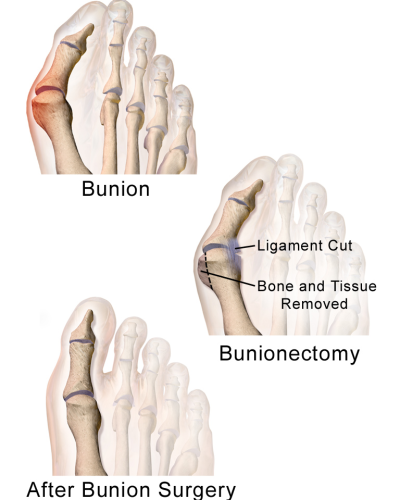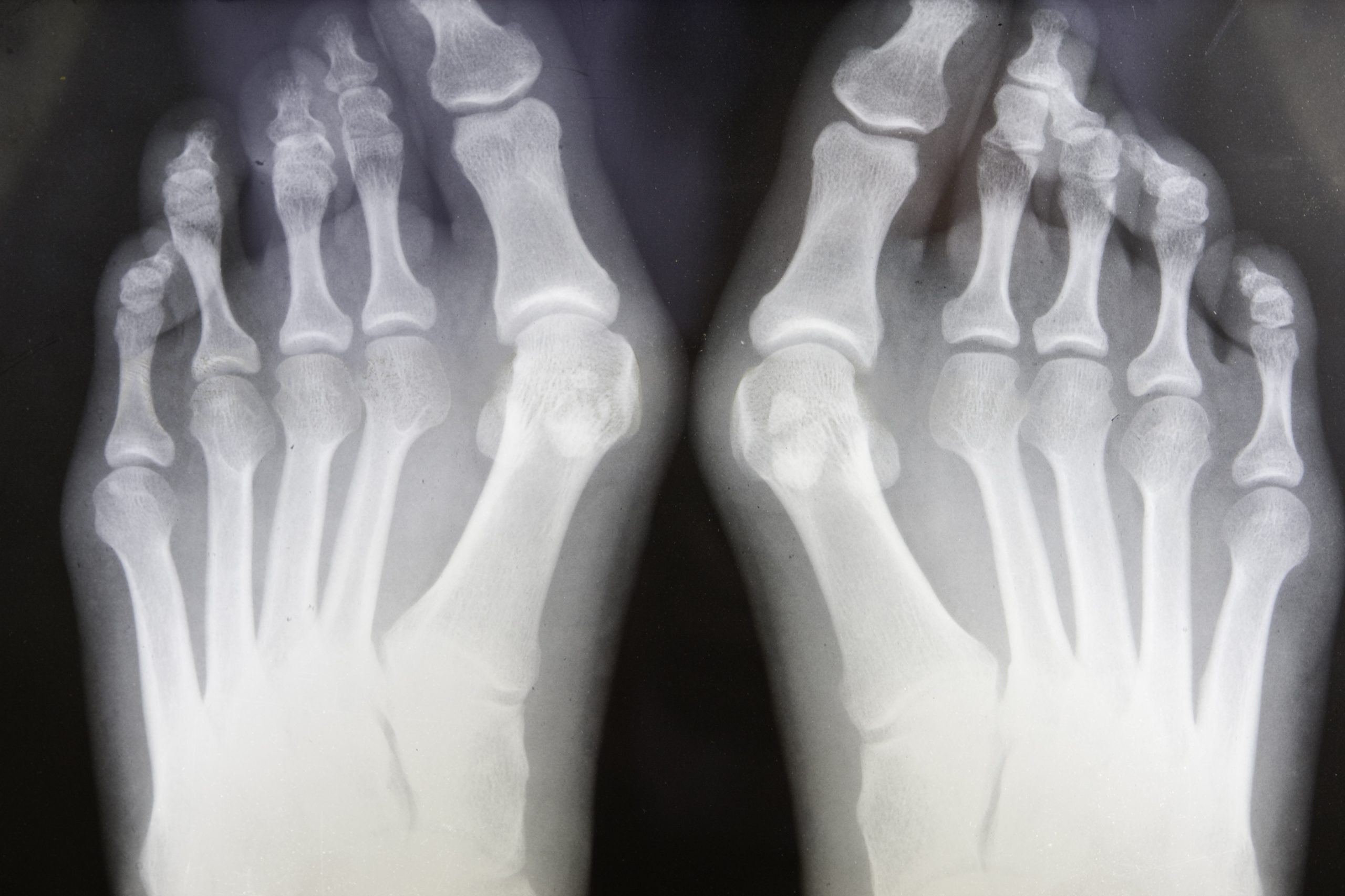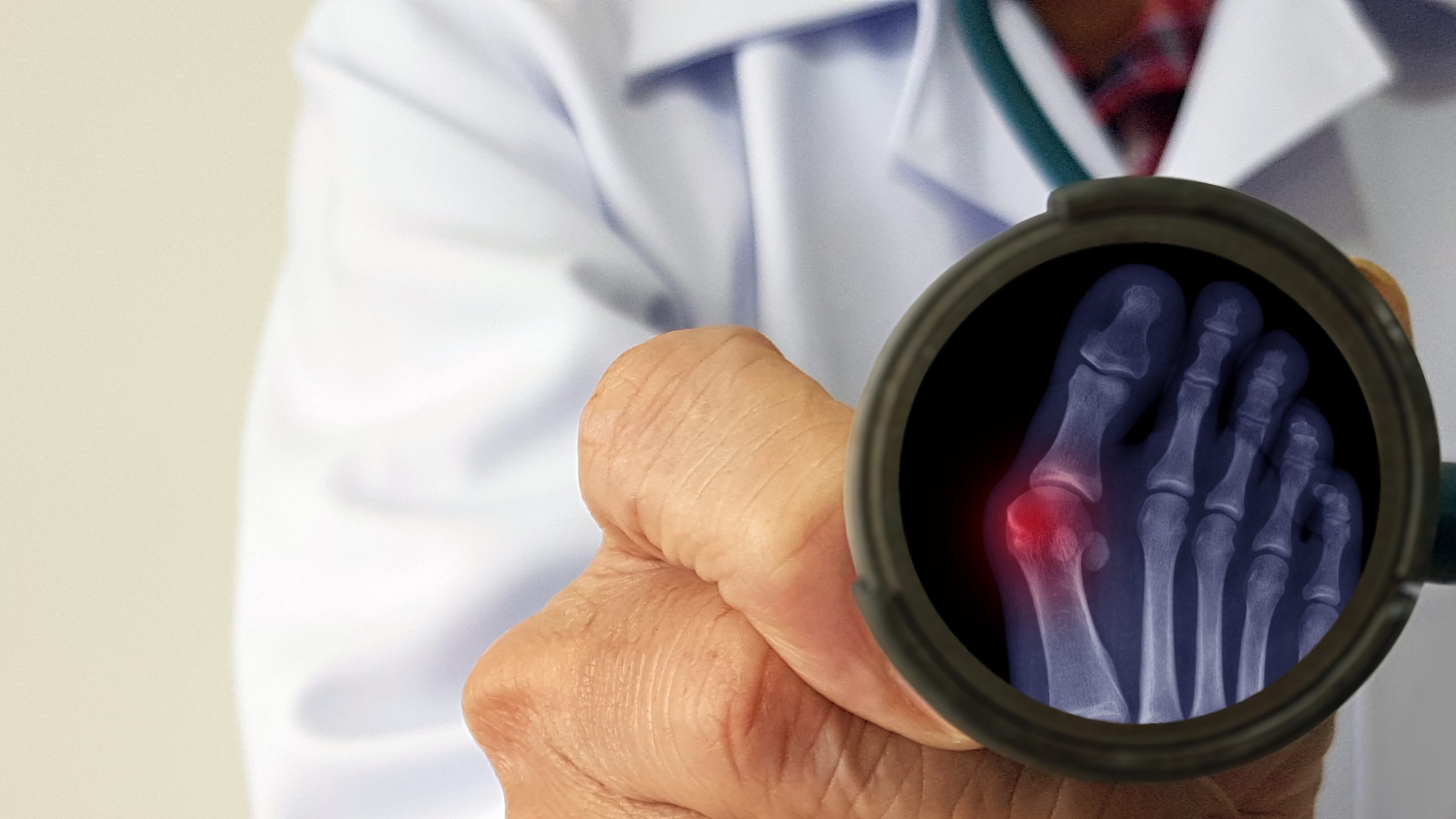Bunion Surgery
Bunion surgery, also known as a bunionectomy, is a procedure to correct the deformity of the joint at the base of the big toe, known as a bunion. This surgery aims to relieve pain and restore normal alignment to the toe joint.

Why Might I Need Bunion Surgery?
Bunion surgery is recommended if you have a significant bunion that causes severe pain and interferes with daily activities. Good candidates for bunion surgery commonly have:
- Significant foot pain: Limits everyday activities, including walking and wearing reasonable shoes.
- Chronic inflammation and swelling: Does not improve with rest or medications.
- Toe deformity: A drifting in of the big toe toward the smaller toes, creating the potential for the toes to cross over each other.
- Toe stiffness: Inability to bend and straighten the big toe.
- Failure to obtain pain relief: With changes in footwear or nonsteroidal anti-inflammatory drugs (NSAIDs).
Deciding to Have Bunion Surgery
As you consider bunion surgery, it is important to have realistic expectations and understand both the potential benefits and limitations. Some helpful questions to ask your doctor include:
- What are the benefits and risks of this surgery?
- What are the possible complications and how likely are they to occur?
- How much pain will there be and how will it be managed?


Surgical Procedures
Common goals of bunion surgeries include:
- Realigning the metatarsophalangeal (MTP) joint at the base of the big toe.
- Relieving pain.
- Correcting the deformity of the bones making up the toe and foot.
Types of Bunion Surgery
Repairing Tendons and Ligaments:
- Shortening loose tissues and lengthening tight ones to balance the big toe.
Osteotomy:
- Making small cuts in the bones to realign the joint.
- Fixing the new break with pins, screws, or plates.
Arthrodesis:
- Removing arthritic joint surfaces and holding them together with screws, wires, or plates until the bones heal.
- Used for severe bunions or severe arthritis.
Exostectomy:
- Removing the bump from the toe joint.
- Often combined with osteotomy.
Resection Arthroplasty:
- Removing the damaged portion of the joint to create a flexible “scar” joint.
- Used mainly for elderly patients or those with severe arthritis not amenable to arthrodesis.
Conditions Where Elbow Arthroscopy Is Needed
Making an Informed Decision About Bunion Surgery
Consider the severity of your pain, mobility limitations, and the effectiveness of conservative treatments.
Common Questions
What are the downsides to bunion surgery?
- Potential for infection, nerve injury, failure to relieve pain, failure of the bone to fully heal, stiffness, and recurrence of the bunion.
What is the success rate of bunion surgery?
- Approximately 90-95% of patients experience positive outcomes, with long-term pain relief and improved quality of life.
What happens if you don’t fix a bunion?
- Bunions can lead to complications such as misalignment of other toes, ingrown toenails, hammertoes, and pain that interferes with daily activities.
What is the best age for bunion surgery?
- There is no specific best age; it depends on the severity of the bunion and the patient’s overall health and activity level.
Are there any non-surgical treatment options for bunions?
- Yes, including shoe modifications, orthotics, padding, and pain management strategies.
Find a Doctor
Hear What Our Patients Have to Say


Had my right hip replaced by Dr Jeffrey, and couldn't be happier with the job he did and the treatment I received. Been a few years and went in for a yearly checkup and everything is great! Great doctor and office staff!

My two partial knee replacements changed my life. I feel very respected and cared for at this practice. Everyone is very professional and explains things very conscientiously.

Dr. Acker is a very good listener and very [accommodating] to my requests. Very understand[ing] and puts my mind at ease for my upcoming knee replacement.

Dr. Kyle Bohm is a miracle worker. He repaired nerves, a ligament and tendon in my fingers after a dog bite. He stitched me up so nicely and made my hand look like a hand again.




